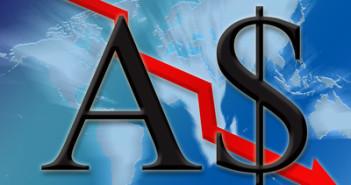At its latest meeting the reserve bank of Australia decided to keep interest rates on hold at 2,5% seemingly happy with a sustained period of low rates with no hint that the bank will lift them anytime soon. In his latest monetary speech last week, RBA governor Glen Sevens noted, “Volatility in some financial markets has picked up over the past couple of months.
Overall, however, financial conditions remain very accommodative. Long-term interest rates and risk spreads remain very low” He also mentioned that “Markets still appear to be attaching a low probability to any rise in global interest rates or other adverse event over the period ahead” giving a hint that he doesn’t expect any of the major central banks around the globe to raise rates anytime soon.
On the topic of Inflation Stevens noted that “Inflation is on target and. Recent data on prices confirmed that inflation is running between 2 and 3 per cent, as expected, and this is likely to continue” Sounding downbeat about the unemployment rate he mentioned that. “Although some forward indicators of employment have been firming this year, the labor market has a degree of spare capacity and it will probably be some time yet before unemployment declines consistently”
Guest Post by Andrew Masters from FiboGroup
The Australian dollar was on the agenda with the governor again expressing his concerns about the value of the Australian dollar even though after hitting an all-time high of US1.1079 cents in July 2011 the currency has dropped more than 20% to finish the week of at US86.33 cents. He noted, “The exchange rate has traded at lower levels recently, in large part reflecting the strengthening US dollar, but the Australian dollar remains above most estimates of its fundamental value, particularly given the further declines in key commodity prices in recent months” Concerning the Aussie dollars effect on the overall economy he stated that “ It is offering less assistance than would normally be expected in achieving balanced growth in the economy”.
The Australian dollar tumbled last week falling as low as US85.39 cents before recovering slightly on Friday to close at US86.33 cents, its lowest level in four years. Pressuring the Aussie dollar was news that the Republican Party had regained control of the US Senate in midterm elections, and taking a majority in both houses of Congress.Republicans are known to be more friendly towards business interests and are also against an extended period of low Interest rates which had many Analysts bringing forward their predictions of an Interest rate rise. Boosting the Aussie in late trading on Friday was the disappointing nonfarm payrolls data from the US. The figure came in at 214,000 well below analysts’ expectations of 231,000 and putting a question mark on the recent robust performance of the US labor market.
On Monday, the Australian currency may face volatility as the latest CPI numbers from China are released to the market. There are fears of a potential slowdown in China now so the figure may prove to be Important.
The Australian share market finished the week on a high note even though two of the biggest banks went ex-dividend dragging down the market. On Friday, the ASX200 index was up 43.0 points to finish at 5,549.1 and the All Ordinaries index finished up 42.9 points to 5,522.1.
“People are taking profits because the banks have rallied pretty hard from early October,” noted Quay Equities head of trading Tristan K’Nell. “A few of them are probably seeing that the profit that they make from the trades is better than the risk of holding the stock into ex-dividend.”
Iron ore, Australia’s biggest export fell to a new five-year low last week with signs that it may hit $US70 dollars per tonne before the end of the year. On Friday, the commodity was trading at around $US76 per tonne having fallen by more than 40% since the start of the year.
